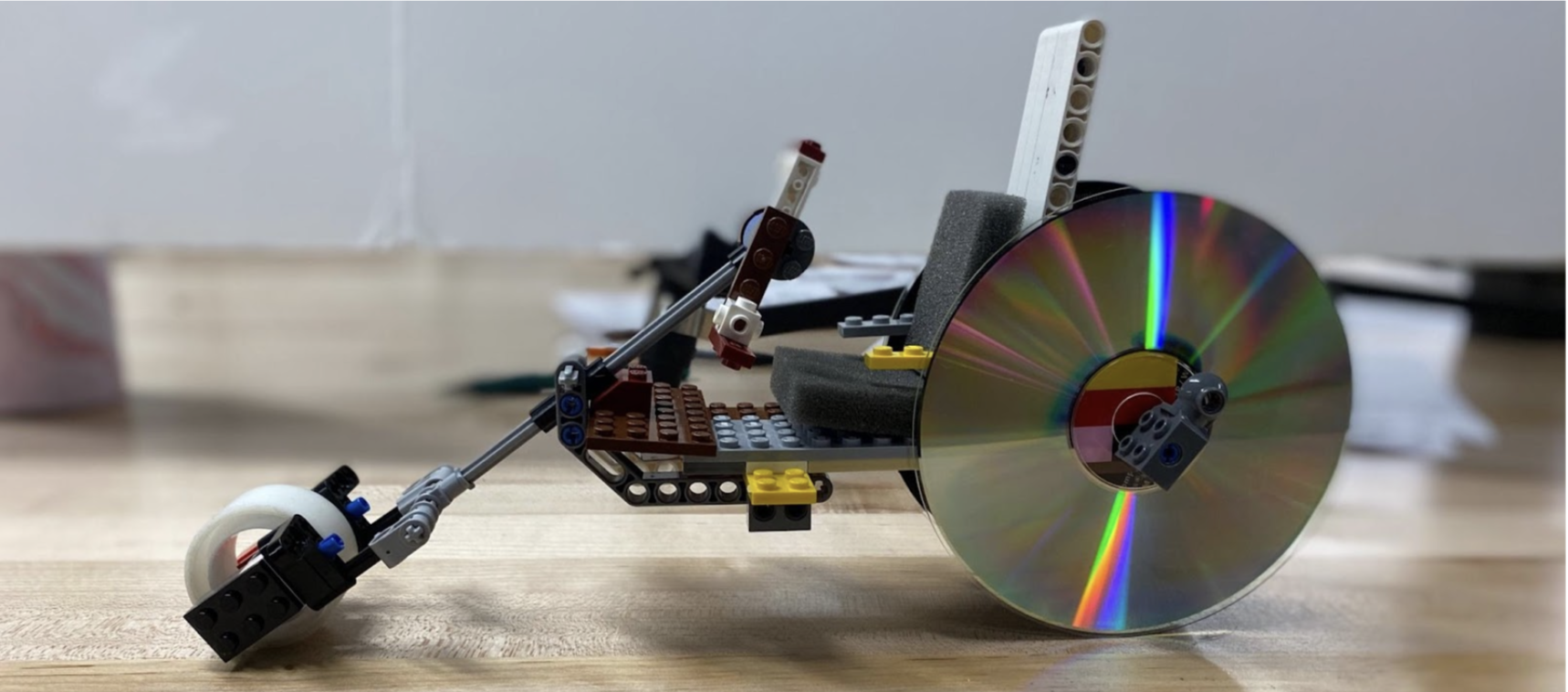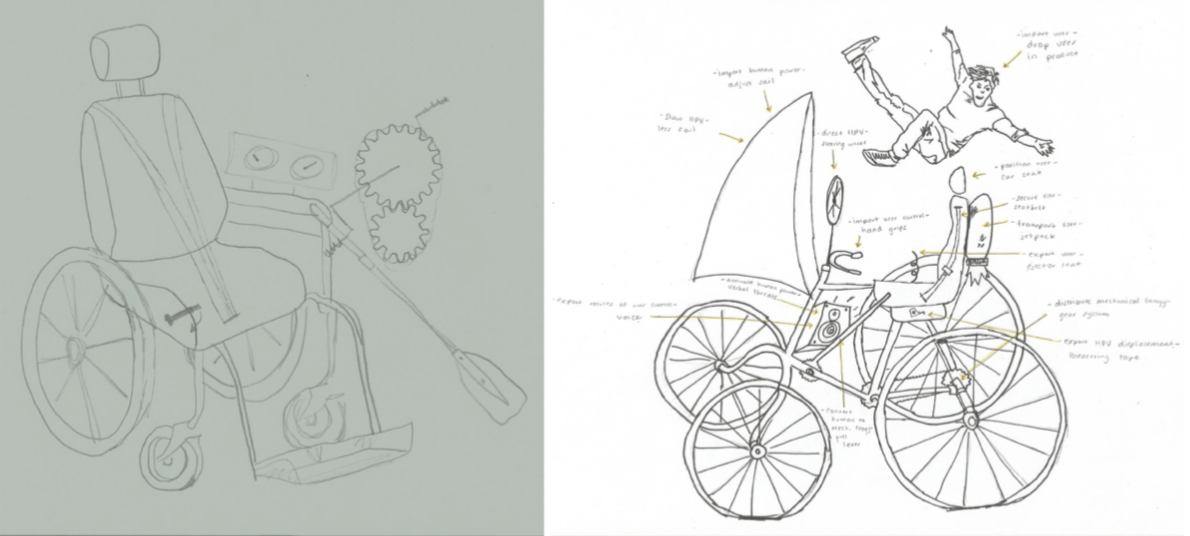
How might we design a human powered vehicle for a member of the community paralyzed from the T-11 vertebrae down?
Human Powered Vehicle
By working with a paraplegic community member, Anthony, I was a part of a team of nine engineering students who were tasked with designing a human powered vehicle, similar to a bike, for him. The goal is to work directly with the client and make the design specific to their preferences and abilities, while still ensuring that the product is functional and safe. The final design incorporated the comfort of his existing wheelchair with the cycling power of a standard bicycle. I collaborated with Anthony to adjust design decisions, such as the height and tilt angle of his seat, while determining what steering and propulsion systems would work best. This project allowed me to gain experience working closely with a client, as well as my peers, which resulted in learning skills such as teaming and the human centered design process.
Since the project was focused on a member of the community local to James Madison University in Harrisonburg, VA, the persona that was created and that informed design decisions was based on him specifically rather than an overall consumer type. This persona outlined background information, pains, gains, limitations, and strengths that informed the design research questions that were decided upon and asked during interviews.
By having a specific client to design for, rather than a consumer type, the process differs slightly and the feedback you receive is very specific and seems less negotiable since there is no nuance to the consumer. As a result of the information collected in design research interviews, ideation, prototyping, and testing followed.
The user research was done through in person interviews, meeting Anthony where he was at to truly understand his position and situation.
Understanding the User
Ideation, Prototyping, and Testing
The ideation that came as a result of the information shared by the client started off my using tools such as morphological matrices, and pugh charts, so flush out all ideas and give room for creativity within the design. Towards the beginning stages of the project, during the ideation phase, I worked on a morphological matrix of ideas to generate ideas on how the client would interact with the human powered vehicle, and how it would export data about the ride. These ideas tended to be ostentatious for the task at hand, but it helped to think broad before narrowing back down into realistic ideas. From this matrix of ideas, various combinations of them were combined and sketched out to see what was going to work, and which components needed new ideas. Although I was working with a team at this point in the project, we all did this work individually and came back together afterwards to create one final design and prototype. The Lego prototype that was made was the result of the team working together based on what each person found on their own.
Once a design had been chosen, and the team discussed it with the client for feedback, we edited the design based on the critiques and began modeling it in Solid Works and completing analytical models in Matlab. For this part of the project, I worked on creating the Solid Works model and a bill of materials within this program. Since the team had a low budget, most parts were going to be sources from the existing supplies or fabricated at the University. As for the analytical modeling, the team was solving for the center of mass, and the maximum user output force of the human powered vehicle. Although I was not the one to create the Matlab code for this element of the project, I solved the problems by hand on paper so we could compare the answers given by Matlab for our base values. This was an important step because it verified that our program worked, so each time we changed dimensions of a part, we did not have to recalculate.






